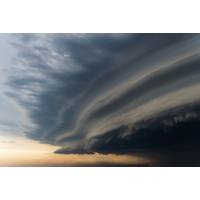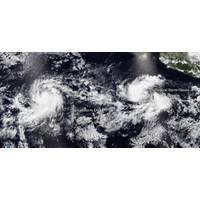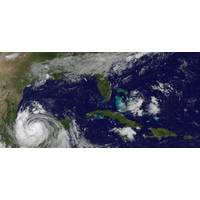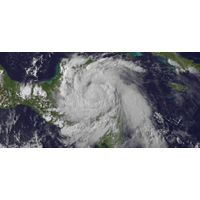
NOAA Raises Predicted Number of Tropical Storms to Record High
hurricane season, which began on June 1, has already produced nine named tropical storms, two of which reached hurricane strength, including Isaias that lashed the North American Atlantic coast this week."We've never forecast up to 25 named storms, so this is the first time," said Gerry Bell, NOAA’s lead hurricane season forecaster in a conference call with reporters.The number of tropical storms could be as few as 19 for the year, Bell said, which would still be above average and leave another nine to develop before the season expires on Nov. 30."There could be more (than

Near- or Below-normal Hurricane Season Predicted for Central Pacific
for the Central Pacific hurricane region. This number includes tropical depressions, named storms and hurricanes. A near-normal season has four or five tropical cyclones.“This year we will likely see less activity in the Central Pacific region compared to more active seasons,” said Gerry Bell, Ph.D., NOAA’s lead seasonal hurricane forecaster at the Climate Prediction Center. “Less activity is predicted since ocean temperatures are likely to be near-average in the central and eastern Pacific Ocean where hurricanes form, and because El Nino is not present to increase the activity

Hurricane Season to be Busier than Predicted
range of 11-17) and 2-5 major hurricanes (increased from the May predicted range of 2-4), NOAA said. The prediction for 5-9 hurricanes remains unchanged from the intial May outlook. “We’re now entering the peak of the season when the bulk of the storms usually form,” said Gerry Bell, Ph.D., lead seasonal hurricane forecaster at NOAA’s Climate Prediction Center. “The wind and air patterns in the area of the tropical Atlantic and Caribbean where many storms develop are very conducive to an above-normal season. This is in part because the chance of an El Nino forming

'Above-normal' Hurricane Season Forecasted
figures for 2017 are higher than last year's prediction of 10 to 16 storms, with four to eight likely to become hurricanes. A weak or non-existent El Nino, which typically suppresses the development of Atlantic hurricanes, and warmer sea surface temperatures factor into the predictions, said Gerry Bell, a NOAA hurricane climate specialist. Forecasters will deploy more sophisticated tools this season to accurately track, image and predict the intensity of storms. They also will revise their model for communicating with the public, in part by sending alerts about storm surge, which is
Atlantic Hurricane Season to be Stronger than Expected
. “We’ve raised the numbers because some conditions now in place are indicative of a more active hurricane season, such as El Niño ending, weaker vertical wind shear and weaker trade winds over the central tropical Atlantic, and a stronger west African monsoon,” said Gerry Bell, Ph.D., lead seasonal hurricane forecaster at NOAA’s Climate Prediction Center. Gerry added: “However, less conducive ocean temperature patterns in both the Atlantic and eastern subtropical North Pacific, combined with stronger wind shear and sinking motion in the atmosphere

Forecasters Predict Strong Atlantic Hurricane Season
. “We’ve raised the numbers because some conditions now in place are indicative of a more active hurricane season, such as El Niño ending, weaker vertical wind shear and weaker trade winds over the central tropical Atlantic, and a stronger west African monsoon,” said Gerry Bell, Ph.D., lead seasonal hurricane forecaster at NOAA’s Climate Prediction Center. “However, less conducive ocean temperature patterns in both the Atlantic and eastern subtropical North Pacific, combined with stronger wind shear and sinking motion in the atmosphere over the Caribbean Sea
 December 2025
December 2025





